219 papers:
 DAC-2015-HanF #analysis #approach #cpu #gpu #graph #scalability
DAC-2015-HanF #analysis #approach #cpu #gpu #graph #scalability- Transient-simulation guided graph sparsification approach to scalable harmonic balance (HB) analysis of post-layout RF circuits leveraging heterogeneous CPU-GPU computing systems (LH, ZF), p. 6.
 DAC-2015-YuUK
DAC-2015-YuUK- Leveraging on-chip voltage regulators as a countermeasure against side-channel attacks (WY, OAU, SK), p. 6.
 HT-2015-JainKJ #network #online #social
HT-2015-JainKJ #network #online #social- Other Times, Other Values: Leveraging Attribute History to Link User Profiles across Online Social Networks (PJ, PK, AJ), pp. 247–255.
 SIGMOD-2015-LiCP #encoding
SIGMOD-2015-LiCP #encoding- A Padded Encoding Scheme to Accelerate Scans by Leveraging Skew (YL, CC, JMP), pp. 1509–1524.
 VLDB-2015-PotharajuCHNWZJ #automation #detection #knowledge base #named
VLDB-2015-PotharajuCHNWZJ #automation #detection #knowledge base #named- ConfSeer: Leveraging Customer Support Knowledge Bases for Automated Misconfiguration Detection (RP, JC, LH, CNR, MW, LZ, NJ), pp. 1828–1839.
 VLDB-2015-Zhou0D #network #online #performance #social
VLDB-2015-Zhou0D #network #online #performance #social- Leveraging History for Faster Sampling of Online Social Networks (ZZ, NZ, GD), pp. 1034–1045.
 ICPC-2015-LeVLP #automation #commit #information management #named
ICPC-2015-LeVLP #automation #commit #information management #named- RCLinker: automated linking of issue reports and commits leveraging rich contextual information (TDBL, MLV, DL, DP), pp. 36–47.
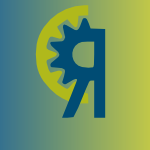 SANER-2015-SharmaTL #automation #identification #named #twitter
SANER-2015-SharmaTL #automation #identification #named #twitter- NIRMAL: Automatic identification of software relevant tweets leveraging language model (AS, YT, DL), pp. 449–458.
 CHI-2015-Al-AmeenWS #multi #random #towards
CHI-2015-Al-AmeenWS #multi #random #towards- Towards Making Random Passwords Memorable: Leveraging Users’ Cognitive Ability Through Multiple Cues (MNAA, MKW, SS), pp. 2315–2324.
 CHI-2015-CaiGGM #education #named
CHI-2015-CaiGGM #education #named- Wait-Learning: Leveraging Wait Time for Second Language Education (CJC, PJG, JRG, RCM), pp. 3701–3710.
 CHI-2015-DergousoffM #crowdsourcing #gamification #mobile
CHI-2015-DergousoffM #crowdsourcing #gamification #mobile- Mobile Gamification for Crowdsourcing Data Collection: Leveraging the Freemium Model (KKD, RLM), pp. 1065–1074.
 CHI-2015-PerraultLBZG #memory management #physics #semantics
CHI-2015-PerraultLBZG #memory management #physics #semantics- Physical Loci: Leveraging Spatial, Object and Semantic Memory for Command Selection (STP, EL, YPB, SZ, YG), pp. 299–308.
 CHI-2015-WinklerGLHSDR #security #smarttech
CHI-2015-WinklerGLHSDR #security #smarttech- Glass Unlock: Enhancing Security of Smartphone Unlocking through Leveraging a Private Near-eye Display (CW, JG, ADL, GH, PS, DD, ER), pp. 1407–1410.
 CSCW-2015-MaYFD #design #feedback #online
CSCW-2015-MaYFD #design #feedback #online- Exiting the Design Studio: Leveraging Online Participants for Early-Stage Design Feedback (XM, LY, JLF, SPD), pp. 676–685.
 CSCW-2015-SiangliulueAGD #collaboration #scalability #towards
CSCW-2015-SiangliulueAGD #collaboration #scalability #towards- Toward Collaborative Ideation at Scale: Leveraging Ideas from Others to Generate More Creative and Diverse Ideas (PS, KCA, KZG, SPD), pp. 937–945.
 CAiSE-2015-HarmanBJRK #elicitation #memory management #process
CAiSE-2015-HarmanBJRK #elicitation #memory management #process- Virtual Business Role-Play: Leveraging Familiar Environments to Prime Stakeholder Memory During Process Elicitation (JH, RB, DJ, SRM, UK), pp. 166–180.
 KDD-2015-JohnsonB #resource management
KDD-2015-JohnsonB #resource management- Structured Hedging for Resource Allocations with Leverage (NJ, AB), pp. 477–486.
 KDD-2015-KalyanamMSVL #evolution #modelling #social #topic
KDD-2015-KalyanamMSVL #evolution #modelling #social #topic- Leveraging Social Context for Modeling Topic Evolution (JK, AM, DST, HV, GRGL), pp. 517–526.
 KDD-2015-LeeFZL #knowledge base
KDD-2015-LeeFZL #knowledge base- Leveraging Knowledge Bases for Contextual Entity Exploration (JL, AF, BZ, YL), pp. 1949–1958.
 RecSys-2015-ForsatiBMER #algorithm #named #performance #recommendation #trust
RecSys-2015-ForsatiBMER #algorithm #named #performance #recommendation #trust- PushTrust: An Efficient Recommendation Algorithm by Leveraging Trust and Distrust Relations (RF, IB, FM, AHE, HR), pp. 51–58.
 SEKE-2015-ParkP #adaptation #ecosystem #framework #middleware
SEKE-2015-ParkP #adaptation #ecosystem #framework #middleware- A Middleware Framework for Leveraging Local and Global Adaptation in IT Ecosystems (SP, YBP), pp. 18–23.
 SIGIR-2015-ParkLZW #mobile #retrieval
SIGIR-2015-ParkLZW #mobile #retrieval- Leveraging User Reviews to Improve Accuracy for Mobile App Retrieval (DHP, ML, CZ, HW), pp. 533–542.
 SIGIR-2015-YangN
SIGIR-2015-YangN- Leveraging Procedural Knowledge for Task-oriented Search (ZY, EN), pp. 513–522.
 POPL-2015-HeGWZ #automaton #composition #concurrent #probability #reasoning
POPL-2015-HeGWZ #automaton #composition #concurrent #probability #reasoning- Leveraging Weighted Automata in Compositional Reasoning about Concurrent Probabilistic Systems (FH, XG, BYW, LZ), pp. 503–514.
 SAC-2015-AbbesPHB #documentation
SAC-2015-AbbesPHB #documentation- Leveraging temporal expressions to filter vital documents related to an entity (RA, KPS, NH, MB), pp. 1093–1098.
 SAC-2015-JesusVB #functional #testing #web
SAC-2015-JesusVB #functional #testing #web- Leveraging task-based data to support functional testing of web applications (FRdJ, LGdV, LABJ), pp. 783–790.
 ICSE-v2-2015-GuerroujBR #documentation
ICSE-v2-2015-GuerroujBR #documentation- Leveraging Informal Documentation to Summarize Classes and Methods in Context (LG, DB, PCR), pp. 639–642.
 ICSE-v2-2015-RajanNL0 #behaviour #repository #scalability #specification
ICSE-v2-2015-RajanNL0 #behaviour #repository #scalability #specification- Inferring Behavioral Specifications from Large-scale Repositories by Leveraging Collective Intelligence (HR, TNN, GTL, RD), pp. 579–582.
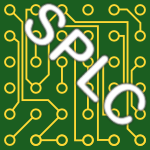 SPLC-2015-TraskR #architecture #modelling #product line
SPLC-2015-TraskR #architecture #modelling #product line- Leveraging model driven engineering in software product line architectures (BT, AR), p. 392.
 HPCA-2015-FarahaniAMK #architecture #memory management #named #standard
HPCA-2015-FarahaniAMK #architecture #memory management #named #standard- NDA: Near-DRAM acceleration architecture leveraging commodity DRAM devices and standard memory modules (AFF, JHA, KM, NSK), pp. 283–295.
 WICSA-2014-BaroniMMW #architecture #modelling #semantics #wiki
WICSA-2014-BaroniMMW #architecture #modelling #semantics #wiki- Architecture Description Leveraging Model Driven Engineering and Semantic Wikis (AB, HM, IM, EW), pp. 251–254.
 ASE-2014-FardMM #automation #generative #testing #web
ASE-2014-FardMM #automation #generative #testing #web- Leveraging existing tests in automated test generation for web applications (AMF, MM, AM), pp. 67–78.
 DAC-2014-CuiCBC #optimisation #set
DAC-2014-CuiCBC #optimisation #set- A Swap-based Cache Set Index Scheme to Leverage both Superpage and Page Coloring Optimizations (ZC, LC, YB, MC), p. 6.
 DAC-2014-MukherjeeL
DAC-2014-MukherjeeL- Leveraging pre-silicon data to diagnose out-of-specification failures in mixed-signal circuits (PM, PL), p. 6.
 DAC-2014-RehmanKSSH #adaptation #code generation #dependence #named #process #reliability
DAC-2014-RehmanKSSH #adaptation #code generation #dependence #named #process #reliability- dTune: Leveraging Reliable Code Generation for Adaptive Dependability Tuning under Process Variation and Aging-Induced Effects (SR, FK, DS, MS, JH), p. 6.
 DAC-2014-TsaiCYYHCCC #energy #using
DAC-2014-TsaiCYYHCCC #energy #using- Leveraging Data Lifetime for Energy-Aware Last Level Non-Volatile SRAM Caches using Redundant Store Elimination (HJT, CCC, KHY, TCY, LYH, CHC, MFC, TFC), p. 6.
 DATE-2014-Huang14a #manycore #network #performance #predict
DATE-2014-Huang14a #manycore #network #performance #predict- Leveraging on-chip networks for efficient prediction on multicore coherence (LH), pp. 1–4.
 SIGMOD-2014-WesleyT
SIGMOD-2014-WesleyT- Leveraging compression in the tableau data engine (RMGW, PT), pp. 563–573.
 VLDB-2015-ZhuYQ14 #graph #online
VLDB-2015-ZhuYQ14 #graph #online- Leveraging Graph Dimensions in Online Graph Search (YZ, JXY, LQ), pp. 85–96.
 ITiCSE-2014-PorterTW #concept #development #flexibility #open source
ITiCSE-2014-PorterTW #concept #development #flexibility #open source- Leveraging open source principles for flexible concept inventory development (LP, CT, KCW), pp. 243–248.
 CHI-2014-HarrisonXSH #interactive #named #physics #tool support
CHI-2014-HarrisonXSH #interactive #named #physics #tool support- TouchTools: leveraging familiarity and skill with physical tools to augment touch interaction (CH, RX, JS, SEH), pp. 2913–2916.
 CSCW-2014-MasliT #feedback
CSCW-2014-MasliT #feedback- Leveraging the contributory potential of user feedback (MM, LGT), pp. 956–966.
 LCT-NLE-2014-SousaLD #human-computer #towards #trust
LCT-NLE-2014-SousaLD #human-computer #towards #trust- A Model for Human-Computer Trust — Contributions Towards Leveraging User Engagement (SCS, DRL, PD), pp. 128–137.
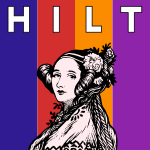 HILT-2014-HuguesG #ada #modelling
HILT-2014-HuguesG #ada #modelling- Leveraging Ada 2012 and SPARK 2014 for assessing generated code from AADL models (JH, CG), pp. 39–46.
 ICEIS-v3-2014-GonzalezAY #architecture #enterprise #evolution
ICEIS-v3-2014-GonzalezAY #architecture #enterprise #evolution- Evolving a Core Banking Enterprise Architecture — Leveraging Business Events Exploitation (BSMG, JMdÁ, JCY), pp. 181–189.
 CIKM-2014-LimB #sentiment #topic #twitter
CIKM-2014-LimB #sentiment #topic #twitter- Twitter Opinion Topic Model: Extracting Product Opinions from Tweets by Leveraging Hashtags and Sentiment Lexicon (KWL, WLB), pp. 1319–1328.
 CIKM-2014-ZhaoMK #collaboration #personalisation #ranking #social
CIKM-2014-ZhaoMK #collaboration #personalisation #ranking #social- Leveraging Social Connections to Improve Personalized Ranking for Collaborative Filtering (TZ, JJM, IK), pp. 261–270.
 ECIR-2014-NguyenK #query #topic
ECIR-2014-NguyenK #query #topic- Leveraging Dynamic Query Subtopics for Time-Aware Search Result Diversification (TNN, NK), pp. 222–234.
 ICML-c1-2014-MaMY #algorithm #statistics
ICML-c1-2014-MaMY #algorithm #statistics- A Statistical Perspective on Algorithmic Leveraging (PM, MWM, BY), pp. 91–99.
 KDD-2014-CharlinZL #collaboration #library
KDD-2014-CharlinZL #collaboration #library- Leveraging user libraries to bootstrap collaborative filtering (LC, RSZ, HL), pp. 173–182.
 KDD-2014-PapailiopoulosKB
KDD-2014-PapailiopoulosKB- Provable deterministic leverage score sampling (DSP, ATK, CB), pp. 997–1006.
 KDD-2014-ParkG #algorithm #health #named #rank #re-engineering
KDD-2014-ParkG #algorithm #health #named #rank #re-engineering- LUDIA: an aggregate-constrained low-rank reconstruction algorithm to leverage publicly released health data (YP, JG), pp. 55–64.
 SIGIR-2014-HuTL #detection #microblog
SIGIR-2014-HuTL #detection #microblog- Leveraging knowledge across media for spammer detection in microblogging (XH, JT, HL), pp. 547–556.
 OOPSLA-2014-ChakrabartiBB #consistency #memory management #named
OOPSLA-2014-ChakrabartiBB #consistency #memory management #named- Atlas: leveraging locks for non-volatile memory consistency (DRC, HJB, KB), pp. 433–452.
 SAC-2014-KatebFNMAT #framework #modelling #multi #optimisation #runtime
SAC-2014-KatebFNMAT #framework #modelling #multi #optimisation #runtime- Generic cloud platform multi-objective optimization leveraging models@run.time (DEK, FF, GN, JAM, MA, YLT), pp. 343–350.
 SPLC-2014-TraskR #architecture #modelling #product line
SPLC-2014-TraskR #architecture #modelling #product line- Leveraging model driven engineering in software product line architectures (BT, AR), pp. 360–361.
 ASPLOS-2014-ArulrajJL #hardware #memory management
ASPLOS-2014-ArulrajJL #hardware #memory management- Leveraging the short-term memory of hardware to diagnose production-run software failures (JA, GJ, SL), pp. 207–222.
 ASPLOS-2014-KwonKP #multi
ASPLOS-2014-KwonKP #multi- Locality-oblivious cache organization leveraging single-cycle multi-hop NoCs (WCK, TK, LSP), pp. 715–728.
 PPoPP-2014-BauerTA #named #performance
PPoPP-2014-BauerTA #named #performance- Singe: leveraging warp specialization for high performance on GPUs (MB, ST, AA), pp. 119–130.
 PPoPP-2014-PetrovicRS #concurrent #hardware #message passing #performance #thread
PPoPP-2014-PetrovicRS #concurrent #hardware #message passing #performance #thread- Leveraging hardware message passing for efficient thread synchronization (DP, TR, AS), pp. 143–154.
 ICST-2014-BardinKC #execution #performance #symbolic computation #test coverage
ICST-2014-BardinKC #execution #performance #symbolic computation #test coverage- Efficient Leveraging of Symbolic Execution to Advanced Coverage Criteria (SB, NK, FC), pp. 173–182.
 SMT-2014-KingBT #integer #linear #programming #smt
SMT-2014-KingBT #integer #linear #programming #smt- Leveraging Linear and Mixed Integer Programming for SMT (TK, CB, CT), p. 65.
 QoSA-2013-CaiWWW #architecture #design
QoSA-2013-CaiWWW #architecture #design- Leveraging design rules to improve software architecture recovery (YC, HW, SW, LW), pp. 133–142.
 ASE-2013-WeimerFF #adaptation #equivalence #modelling #program repair
ASE-2013-WeimerFF #adaptation #equivalence #modelling #program repair- Leveraging program equivalence for adaptive program repair: Models and first results (WW, ZPF, SF), pp. 356–366.
 DATE-2013-BoleyCAC #analysis #estimation #performance
DATE-2013-BoleyCAC #analysis #estimation #performance- Leveraging sensitivity analysis for fast, accurate estimation of SRAM dynamic write VMIN (JB, VC, RCA, BHC), pp. 1819–1824.
 DATE-2013-RehmanSAKCH #hardware #reliability
DATE-2013-RehmanSAKCH #hardware #reliability- Leveraging variable function resilience for selective software reliability on unreliable hardware (SR, MS, PVA, FK, JJC, JH), pp. 1759–1764.
 SIGMOD-2013-WangLKFF #crowdsourcing #transitive
SIGMOD-2013-WangLKFF #crowdsourcing #transitive- Leveraging transitive relations for crowdsourced joins (JW, GL, TK, MJF, JF), pp. 229–240.
 CSMR-2013-PonzanelliBL #comprehension #development
CSMR-2013-PonzanelliBL #comprehension #development- Leveraging Crowd Knowledge for Software Comprehension and Development (LP, AB, ML), pp. 57–66.
 CSMR-2013-SurianTLCL #network #predict
CSMR-2013-SurianTLCL #network #predict- Predicting Project Outcome Leveraging Socio-Technical Network Patterns (DS, YT, DL, HC, EPL), pp. 47–56.
 ICSM-2013-SyerJNHNF #execution #performance
ICSM-2013-SyerJNHNF #execution #performance- Leveraging Performance Counters and Execution Logs to Diagnose Memory-Related Performance Issues (MDS, ZMJ, MN, AEH, MNN, PF), pp. 110–119.
 WCRE-2013-AliJH #co-evolution #requirements #traceability
WCRE-2013-AliJH #co-evolution #requirements #traceability- Leveraging historical co-change information for requirements traceability (NA, FJ, AEH), pp. 361–370.
 WCRE-2013-DaiMLC #component #precise #specification
WCRE-2013-DaiMLC #component #precise #specification- Leveraging specifications of subcomponents to mine precise specifications of composite components (ZD, XM, YL, LC), pp. 162–171.
 CHI-2013-HasanAI #mobile #named
CHI-2013-HasanAI #mobile #named- Ad-binning: leveraging around device space for storing, browsing and retrieving mobile device content (KH, DA, PI), pp. 899–908.
 ECIR-2013-PatilDV #concept
ECIR-2013-PatilDV #concept- Leveraging Latent Concepts for Retrieving Relevant Ads for Short Text (AP, KSD, VV), pp. 780–783.
 ECIR-2013-Schedl #information retrieval #microblog #music
ECIR-2013-Schedl #information retrieval #microblog #music- Leveraging Microblogs for Spatiotemporal Music Information Retrieval (MS), pp. 796–799.
 KDD-2013-DasMGW #learning
KDD-2013-DasMGW #learning- Learning to question: leveraging user preferences for shopping advice (MD, GDFM, AG, IW), pp. 203–211.
 KDD-2013-ShakarianRCK #community #composition #distance #mining #network #social
KDD-2013-ShakarianRCK #community #composition #distance #mining #network #social- Mining for geographically disperse communities in social networks by leveraging distance modularity (PS, PR, DC, CK), pp. 1402–1409.
 RecSys-2013-BlankRS #graph #keyword #recommendation
RecSys-2013-BlankRS #graph #keyword #recommendation- Leveraging the citation graph to recommend keywords (IB, LR, GS), pp. 359–362.
 RecSys-2013-OstuniNSM #feedback #linked data #open data #recommendation
RecSys-2013-OstuniNSM #feedback #linked data #open data #recommendation- Top-N recommendations from implicit feedback leveraging linked open data (VCO, TDN, EDS, RM), pp. 85–92.
 SIGIR-2013-MahdabiGHC #ambiguity #concept #proximity #query #retrieval #using
SIGIR-2013-MahdabiGHC #ambiguity #concept #proximity #query #retrieval #using- Leveraging conceptual lexicon: query disambiguation using proximity information for patent retrieval (PM, SG, JXH, FC), pp. 113–122.
 SIGIR-2013-YamamotoN #classification #music #video
SIGIR-2013-YamamotoN #classification #music #video- Leveraging viewer comments for mood classification of music video clips (TY, SN), pp. 797–800.
 ER-BR-2013-ViterboSM #information management
ER-BR-2013-ViterboSM #information management- Developing IT Systems to Leverage Information and Knowledge Management (JV, MLS, CAM).
 SAC-2013-KumarR #algorithm #data type #identification #online
SAC-2013-KumarR #algorithm #data type #identification #online- Online identification of frequently executed acyclic paths by leveraging data stream algorithms (GK, SR), pp. 1694–1695.
 SAC-2013-ZarembaBVH #as a service #in the cloud #linked data #open data
SAC-2013-ZarembaBVH #as a service #in the cloud #linked data #open data- Matchmaking of IaaS cloud computing offers leveraging linked data (MZ, SB, TV, MH), pp. 383–388.
 ICSE-2013-PhamSS #commit #social #testing
ICSE-2013-PhamSS #commit #social #testing- Building test suites in social coding sites by leveraging drive-by commits (RP, LS, KS), pp. 1209–1212.
 SPLC-2013-TraskR #architecture #modelling #product line
SPLC-2013-TraskR #architecture #modelling #product line- Leveraging model driven engineering in software product line architectures (BT, AR), p. 279.
 HPDC-2013-NicolaeC #adaptation #data access #incremental #memory management #named
HPDC-2013-NicolaeC #adaptation #data access #incremental #memory management #named- AI-Ckpt: leveraging memory access patterns for adaptive asynchronous incremental checkpointing (BN, FC), pp. 155–166.
 ICST-2013-FryW #analysis #maintenance
ICST-2013-FryW #analysis #maintenance- Leveraging Light-Weight Analyses to Aid Software Maintenance (ZPF, WW), pp. 507–508.
 DATE-2012-PoulosYAVL #debugging #functional
DATE-2012-PoulosYAVL #debugging #functional- Leveraging reconfigurability to raise productivity in FPGA functional debug (ZP, YSY, JA, AGV, BL), pp. 292–295.
 HT-2012-LipczakSJ #comprehension #network #online #social
HT-2012-LipczakSJ #comprehension #network #online #social- Understanding and leveraging tag-based relations in on-line social networks (ML, BS, AJ), pp. 229–238.
 HT-2012-OKeeffeOCLW #adaptation #corpus #hypermedia #modelling #semantics #web
HT-2012-OKeeffeOCLW #adaptation #corpus #hypermedia #modelling #semantics #web- Linked open corpus models, leveraging the semantic web for adaptive hypermedia (IO, AO, PC, SL, VW), pp. 321–322.
 HT-2012-RadMRB #collaboration #editing #wiki
HT-2012-RadMRB #collaboration #editing #wiki- Leveraging editor collaboration patterns in wikipedia (HSR, AM, DR, DB), pp. 13–22.
 ICPC-2012-Keivanloo #clone detection #code search #detection #source code
ICPC-2012-Keivanloo #clone detection #code search #detection #source code- Leveraging clone detection for Internet-scale source code search (IK), pp. 277–280.
 ICSM-2012-GongLJZ #fault #feedback #interactive #locality
ICSM-2012-GongLJZ #fault #feedback #interactive #locality- Interactive fault localization leveraging simple user feedback (LG, DL, LJ, HZ), pp. 67–76.
 ICSM-2012-Pollock #analysis #challenge #natural language
ICSM-2012-Pollock #analysis #challenge #natural language- Leveraging natural language analysis of software: Achievements, challenges, and opportunities (LLP), p. 4.
 ICSM-2012-TangWZL #detection #maintenance
ICSM-2012-TangWZL #detection #maintenance- Time-leverage point detection for time sensitive software maintenance (ET, LW, JZ, XL), pp. 567–570.
 ICSM-2012-WangLJ #collaboration #semantics #taxonomy
ICSM-2012-WangLJ #collaboration #semantics #taxonomy- Inferring semantically related software terms and their taxonomy by leveraging collaborative tagging (SW, DL, LJ), pp. 604–607.
 CHI-2012-FisherCK #distributed
CHI-2012-FisherCK #distributed- Distributed sensemaking: improving sensemaking by leveraging the efforts of previous users (KF, SC, AK), pp. 247–256.
 CHI-2012-PedroS #exclamation #social
CHI-2012-PedroS #exclamation #social- Your opinion counts!: leveraging social comments for analyzing aesthetic perception of photographs (JSP, PS), pp. 2519–2522.
 ICEIS-v3-2012-BabaianL #enterprise
ICEIS-v3-2012-BabaianL #enterprise- Leveraging Usage History to Support Enterprise System Users (TB, WTL), pp. 35–44.
 CIKM-2012-KashyapAH #named #network #personalisation #social
CIKM-2012-KashyapAH #named #network #personalisation #social- SonetRank: leveraging social networks to personalize search (AK, RA, VH), pp. 2045–2049.
 CIKM-2012-KimC #approximate #composition #dependence #functional #performance
CIKM-2012-KimC #approximate #composition #dependence #functional #performance- Decomposition-by-normalization (DBN): leveraging approximate functional dependencies for efficient tensor decomposition (MK, KSC), pp. 355–364.
 CIKM-2012-WuCLXBZ #matrix #probability
CIKM-2012-WuCLXBZ #matrix #probability- Leveraging tagging for neighborhood-aware probabilistic matrix factorization (LW, EC, QL, LX, TB, LZ), pp. 1854–1858.
 CIKM-2012-YanZN #realtime
CIKM-2012-YanZN #realtime- Leveraging read rates of passive RFID tags for real-time indoor location tracking (DY, ZZ, WN), pp. 375–384.
 ICML-2012-MahoneyDMW #approximate #matrix #performance #statistics
ICML-2012-MahoneyDMW #approximate #matrix #performance #statistics- Fast approximation of matrix coherence and statistical leverage (MWM, PD, MMI, DPW), p. 137.
 KDD-2012-Douglas #modelling #multi #predict
KDD-2012-Douglas #modelling #multi #predict- Leveraging predictive modeling to reduce signal theft in a multi-service organization environment (SD), p. 1004.
 RecSys-2012-AminYSBP #network #recommendation #social
RecSys-2012-AminYSBP #network #recommendation #social- Social referral: leveraging network connections to deliver recommendations (MSA, BY, SS, AB, CP), pp. 273–276.
 SAC-2012-HsiehC #social
SAC-2012-HsiehC #social- Finding similar items by leveraging social tag clouds (CCH, JC), pp. 644–651.
 ICSE-2012-PradelG #automation #debugging #detection #generative #mining #specification #testing
ICSE-2012-PradelG #automation #debugging #detection #generative #mining #specification #testing- Leveraging test generation and specification mining for automated bug detection without false positives (MP, TRG), pp. 288–298.
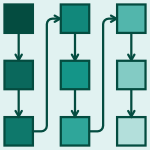 PLEASE-2012-FilhoBBN #modelling #multi #product line #variability
PLEASE-2012-FilhoBBN #modelling #multi #product line #variability- Leveraging variability modeling for multi-dimensional model-driven software product lines (JBFF, OB, BB, JLN), pp. 5–8.
 ASPLOS-2012-GovindanWSU #energy
ASPLOS-2012-GovindanWSU #energy- Leveraging stored energy for handling power emergencies in aggressively provisioned datacenters (SG, DW, AS, BU), pp. 75–86.
 HPDC-2012-Bianchini #energy
HPDC-2012-Bianchini #energy- Leveraging renewable energy in data centers: present and future (RB), pp. 135–136.
 CAV-2012-RolliniSS #model checking
CAV-2012-RolliniSS #model checking- Leveraging Interpolant Strength in Model Checking (SFR, OS, NS), pp. 193–209.
 ICST-2012-SprenkleCP #classification #modelling #statistics #web
ICST-2012-SprenkleCP #classification #modelling #statistics #web- Leveraging User-Privilege Classification to Customize Usage-based Statistical Models of Web Applications (SS, CC, LLP), pp. 161–170.
 DAC-2011-AdirNSZMS #validation #verification
DAC-2011-AdirNSZMS #validation #verification- Leveraging pre-silicon verification resources for the post-silicon validation of the IBM POWER7 processor (AA, AN, GS, AZ, CM, JS), pp. 569–574.
 DAC-2011-MillerBHDCB #analysis #testing #validation
DAC-2011-MillerBHDCB #analysis #testing #validation- A method to leverage pre-silicon collateral and analysis for post-silicon testing and validation (GM, BB, YCH, JD, XC, GB), pp. 575–578.
 HT-2011-ChoudhuryCC #identification #social #social media
HT-2011-ChoudhuryCC #identification #social #social media- Identifying relevant social media content: leveraging information diversity and user cognition (MDC, SC, MC), pp. 161–170.
 SIGMOD-2011-ElmeleegyEL #generative #query
SIGMOD-2011-ElmeleegyEL #generative #query- Leveraging query logs for schema mapping generation in U-MAP (HE, AKE, JL), pp. 121–132.
 SIGMOD-2011-LinACOW #framework #named #pipes and filters #scalability
SIGMOD-2011-LinACOW #framework #named #pipes and filters #scalability- Llama: leveraging columnar storage for scalable join processing in the MapReduce framework (YL, DA, CC, BCO, SW), pp. 961–972.
 CSEET-2011-CaiIW #design #education #matrix
CSEET-2011-CaiIW #design #education #matrix- Leveraging design structure matrices in software design education (YC, DI, SW), pp. 179–188.
 SEFM-2011-MoriLDID #adaptation #configuration management #self
SEFM-2011-MoriLDID #adaptation #configuration management #self- Leveraging State-Based User Preferences in Context-Aware Reconfigurations for Self-Adaptive Systems (MM, FL, CD, PI, SD), pp. 286–301.
 CIKM-2011-BhamidipatiK
CIKM-2011-BhamidipatiK- A diversity measure leveraging domain specific auxiliary information (NB, NK), pp. 2213–2216.
 CIKM-2011-CaiZLZ #classification #scalability #semantics #wiki
CIKM-2011-CaiZLZ #classification #scalability #semantics #wiki- Large-scale question classification in cQA by leveraging Wikipedia semantic knowledge (LC, GZ, KL, JZ), pp. 1321–1330.
 CIKM-2011-LauLBW #learning #scalability #sentiment #web
CIKM-2011-LauLBW #learning #scalability #sentiment #web- Leveraging web 2.0 data for scalable semi-supervised learning of domain-specific sentiment lexicons (RYKL, CLL, PB, KFW), pp. 2457–2460.
 CIKM-2011-WuXPZHL #concept #wiki
CIKM-2011-WuXPZHL #concept #wiki- Leveraging Wikipedia concept and category information to enhance contextual advertising (ZW, GX, RP, YZ, ZH, JL), pp. 2105–2108.
 CIKM-2011-ZhuCXCT #category theory #ranking #towards
CIKM-2011-ZhuCXCT #category theory #ranking #towards- Towards expert finding by leveraging relevant categories in authority ranking (HZ, HC, HX, EC, JT), pp. 2221–2224.
 KDD-2011-DasDH #collaboration #design #web
KDD-2011-DasDH #collaboration #design #web- Leveraging collaborative tagging for web item design (MD, GD, VH), pp. 538–546.
 KDD-2011-KorenLMS #automation #email
KDD-2011-KorenLMS #automation #email- Automatically tagging email by leveraging other users’ folders (YK, EL, YM, RS), pp. 913–921.
 KDIR-2011-MantrachR #people #retrieval #social
KDIR-2011-MantrachR #people #retrieval #social- People Retrieval Leveraging Textual and Social Data (AM, JMR), pp. 333–341.
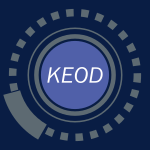 KEOD-2011-KotowskiHGHS #design #user interface #workflow
KEOD-2011-KotowskiHGHS #design #user interface #workflow- Leveraging user Knowledge — Design Principles for an Intuitive User Interface for Building Workflows (DK, GH, MGG, HH, DAS), pp. 176–182.
 RecSys-2011-LopsGSNM #network #social
RecSys-2011-LopsGSNM #network #social- Leveraging the linkedin social network data for extracting content-based user profiles (PL, MdG, GS, FN, CM), pp. 293–296.
 RE-2011-GotelM #requirements #traceability
RE-2011-GotelM #requirements #traceability- Out of the labyrinth: Leveraging other disciplines for requirements traceability (OG, SJM), pp. 121–130.
 SAC-2011-SimoesO #behaviour #game studies #learning #modelling
SAC-2011-SimoesO #behaviour #game studies #learning #modelling- Leveraging the dynamics of learning by modeling and managing psychosocial relations and behavior by means of game theory and memetics (JCS, NO), pp. 1194–1201.
 ESEC-FSE-2011-AutiliCRIPT #named #nondeterminism #ubiquitous
ESEC-FSE-2011-AutiliCRIPT #named #nondeterminism #ubiquitous- EAGLE: engineering software in the ubiquitous globe by leveraging uncErtainty (MA, VC, DDR, PI, PP, MT), pp. 488–491.
 ESEC-FSE-2011-BeschastnikhBSSE #automation #invariant #modelling
ESEC-FSE-2011-BeschastnikhBSSE #automation #invariant #modelling- Leveraging existing instrumentation to automatically infer invariant-constrained models (IB, YB, SS, MS, MDE), pp. 267–277.
 GTTSE-2011-Fuhrer #ide #static analysis
GTTSE-2011-Fuhrer #ide #static analysis- Leveraging Static Analysis in an IDE (RMF), pp. 101–158.
 ICSE-2011-CassouBCL #architecture #development #verification
ICSE-2011-CassouBCL #architecture #development #verification- Leveraging software architectures to guide and verify the development of sense/compute/control applications (DC, EB, CC, JLL), pp. 431–440.
 SPLC-2011-TraskR #architecture #modelling #product line
SPLC-2011-TraskR #architecture #modelling #product line- Leveraging Model Driven Engineering in Software Product Line Architectures (BT, AR), pp. 356–357.
 HPCA-2011-VantreaseLB #protocol
HPCA-2011-VantreaseLB #protocol- Atomic Coherence: Leveraging nanophotonics to build race-free cache coherence protocols (DV, MHL, NLB), pp. 132–143.
 VMCAI-2011-SteffenR #quality
VMCAI-2011-SteffenR #quality- Quality Engineering: Leveraging Heterogeneous Information — (Invited Talk) (BS, OR), pp. 23–37.
 DAC-2010-HazraMDPBG #architecture #modelling #verification
DAC-2010-HazraMDPBG #architecture #modelling #verification- Leveraging UPF-extracted assertions for modeling and formal verification of architectural power intent (AH, SM, PD, AP, DB, KG), pp. 773–776.
 DATE-2010-BerahaWCK #case study #design #requirements
DATE-2010-BerahaWCK #case study #design #requirements- Leveraging application-level requirements in the design of a NoC for a 4G SoC — a case study (RB, IW, IC, AK), pp. 1408–1413.
 DATE-2010-JeeraditKH #optimisation
DATE-2010-JeeraditKH #optimisation- Intent-leveraged optimization of analog circuits via homotopy (MJ, JK, MH), pp. 1614–1619.
 DATE-2010-MangassarianLGVB #preprocessor
DATE-2010-MangassarianLGVB #preprocessor- Leveraging dominators for preprocessing QBF (HM, BL, AG, AGV, FB), pp. 1695–1700.
 HT-2010-AbelKK #folksonomy #multi
HT-2010-AbelKK #folksonomy #multi- Leveraging multi-faceted tagging to improve search in folksonomy systems (FA, RK, DK), pp. 299–300.
 SIGMOD-2010-ChenKWS
SIGMOD-2010-ChenKWS- Leveraging spatio-temporal redundancy for RFID data cleansing (HC, WSK, HW, MTS), pp. 51–62.
 PLDI-2010-KamruzzamanST #concurrent #distributed #performance #thread
PLDI-2010-KamruzzamanST #concurrent #distributed #performance #thread- Software data spreading: leveraging distributed caches to improve single thread performance (MK, SS, DMT), pp. 460–470.
 CIKM-2010-HanZ #semantics #topic #web #wiki
CIKM-2010-HanZ #semantics #topic #web #wiki- Topic-driven web search result organization by leveraging wikipedia semantic knowledge (XH, JZ), pp. 1749–1752.
 KDD-2010-YanFDR #classification
KDD-2010-YanFDR #classification- Medical coding classification by leveraging inter-code relationships (YY, GF, JGD, RR), pp. 193–202.
 SIGIR-2010-McCreadie
SIGIR-2010-McCreadie- Leveraging user-generated content for news search (RM), p. 919.
 SIGIR-2010-Stiller #collaboration #information management #interactive #library #multi
SIGIR-2010-Stiller #collaboration #information management #interactive #library #multi- Leveraging user interaction and collaboration for improving multilingual information access in digital libraries (JS), p. 916.
 RE-2010-Beatty10a
RE-2010-Beatty10a- If You Build It, Will They Use It? Leveraging Business Objectives to Deliver Successful Projects (JB), pp. 413–414.
 SAC-2010-DomanPD #fuzzy #network #query
SAC-2010-DomanPD #fuzzy #network #query- Leveraging fuzzy query processing to support applications in wireless sensor networks (MD, JP, TD), pp. 764–771.
 FSE-2010-BajracharyaOL #effectiveness #repository #retrieval #similarity
FSE-2010-BajracharyaOL #effectiveness #repository #retrieval #similarity- Leveraging usage similarity for effective retrieval of examples in code repositories (SKB, JO, CVL), pp. 157–166.
 ICSE-2010-SalgerE #development #information management #specification #testing
ICSE-2010-SalgerE #development #information management #specification #testing- Knowledge transfer in global software development: leveraging acceptance test case specifications (FS, GE), pp. 211–214.
 SPLC-2010-TraskR #architecture #modelling #product line
SPLC-2010-TraskR #architecture #modelling #product line- Leveraging Model Driven Engineering in Software Product Line Architectures (BT, AR), pp. 517–518.
 PPoPP-2010-BarretoDFGK #memory management #parallel #transaction
PPoPP-2010-BarretoDFGK #memory management #parallel #transaction- Leveraging parallel nesting in transactional memory (JB, AD, PF, RG, MK), pp. 91–100.
 ICST-2010-YanCZZZ #clustering #execution
ICST-2010-YanCZZZ #clustering #execution- A Dynamic Test Cluster Sampling Strategy by Leveraging Execution Spectra Information (SY, ZC, ZZ, CZ, YZ), pp. 147–154.
 DAC-2009-DengCS #authentication #hardware #performance #simulation
DAC-2009-DengCS #authentication #hardware #performance #simulation- Hardware authentication leveraging performance limits in detailed simulations and emulations (DYD, AHC, GES), pp. 682–687.
 DAC-2009-RanjanCS #debugging #verification
DAC-2009-RanjanCS #debugging #verification- Beyond verification: leveraging formal for debugging (RKR, CC, SS), pp. 648–651.
 ITiCSE-2009-AndersonJD #distance #education
ITiCSE-2009-AndersonJD #distance #education- Xen worlds: leveraging virtualization in distance education (BRA, AKJ, TED), pp. 293–297.
 HCD-2009-MahouiJZA #behaviour #design #interface #personalisation #web
HCD-2009-MahouiJZA #behaviour #design #interface #personalisation #web- Leveraging User Search Behavior to Design Personalized Browsing Interfaces for Healthcare Web Sites (MM, JFJ, DZ, KA), pp. 511–520.
 HCI-NT-2009-Williams #case study #framework #research
HCI-NT-2009-Williams #case study #framework #research- Leveraging a User Research Framework to Guide Research Investments: Windows Vista Case Study (GW), pp. 530–539.
 OCSC-2009-WillisR #mobile #student
OCSC-2009-WillisR #mobile #student- Leveraging Mobile Devices to Develop Intercultural Competency for Digital Students (MW, EMR), pp. 545–553.
 CIKM-2009-HanZ #ambiguity #semantics #wiki
CIKM-2009-HanZ #ambiguity #semantics #wiki- Named entity disambiguation by leveraging wikipedia semantic knowledge (XH, JZ), pp. 215–224.
 SIGIR-2009-ZieglerJ #web
SIGIR-2009-ZieglerJ #web- Leveraging sources of collective wisdom on the web for discovering technology synergies (CNZ, SJ), pp. 548–555.
 SAC-2009-BoucherZ #owl
SAC-2009-BoucherZ #owl- Leveraging OWL for GIS interoperability: rewards and pitfalls (SB, EZ), pp. 1267–1272.
 SPLC-2009-TraskR #architecture #modelling #product line
SPLC-2009-TraskR #architecture #modelling #product line- Leveraging model driven engineering in software product line architectures (BT, AR), p. 323.
 DAC-2008-UrardMGC #equivalence
DAC-2008-UrardMGC #equivalence- Leveraging sequential equivalence checking to enable system-level to RTL flows (PU, AM, RG, NC), pp. 816–821.
 DATE-2008-ChakrabortySP #layout #optimisation
DATE-2008-ChakrabortySP #layout #optimisation- Layout Level Timing Optimization by Leveraging Active Area Dependent Mobility of Strained-Silicon Devices (AC, SXS, DZP), pp. 849–855.
 CSEET-2008-Tiemann #named
CSEET-2008-Tiemann #named- Exonovation — Leveraging the Innovation of Others (MT), p. 17.
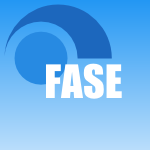 FASE-2008-LagardeETAG #domain model #modelling #uml
FASE-2008-LagardeETAG #domain model #modelling #uml- Leveraging Patterns on Domain Models to Improve UML Profile Definition (FL, HE, FT, CA, SG), pp. 116–130.
 RecSys-2008-ParkT #how #recommendation
RecSys-2008-ParkT #how #recommendation- The long tail of recommender systems and how to leverage it (YJP, AT), pp. 11–18.
 RecSys-2008-Umyarov #performance #predict #recommendation
RecSys-2008-Umyarov #performance #predict #recommendation- Leveraging aggregate ratings for improving predictive performance of recommender systems (AU), pp. 327–330.
 SIGIR-2008-HuFCZLYC #clustering #semantics #wiki
SIGIR-2008-HuFCZLYC #clustering #semantics #wiki- Enhancing text clustering by leveraging Wikipedia semantics (JH, LF, YC, HJZ, HL, QY, ZC), pp. 179–186.
 RE-2008-RecioSPM #collaboration #process #requirements
RE-2008-RecioSPM #collaboration #process #requirements- Leveraging Collaborative Technologies in the IO Requirements Process (RR, CS, JP, CM), pp. 283–288.
 SPLC-2008-TraskR #architecture #modelling #product line
SPLC-2008-TraskR #architecture #modelling #product line- Leveraging Model Driven Engineering in Software Product Line Architectures (BT, AR), p. 373.
 OSDI-2008-DouceurEHL #legacy #web
OSDI-2008-DouceurEHL #legacy #web- Leveraging Legacy Code to Deploy Desktop Applications on the Web (JRD, JE, JH, JRL), pp. 339–354.
 PPoPP-2008-McGacheyAHMSS #concurrent #garbage collection #memory management #transaction
PPoPP-2008-McGacheyAHMSS #concurrent #garbage collection #memory management #transaction- Concurrent GC leveraging transactional memory (PM, ARAT, RLH, VM, BS, TS), pp. 217–226.
 ECSA-2007-HarrisonA #design pattern #quality
ECSA-2007-HarrisonA #design pattern #quality- Leveraging Architecture Patterns to Satisfy Quality Attributes (NBH, PA), pp. 263–270.
 ASE-2007-LagardeETG #concept #design #domain model #modelling #uml
ASE-2007-LagardeETG #concept #design #domain model #modelling #uml- Improving uml profile design practices by leveraging conceptual domain models (FL, HE, FT, SG), pp. 445–448.
 ASE-2007-NaslavskyZR #model transformation #modelling #testing #towards
ASE-2007-NaslavskyZR #model transformation #modelling #testing #towards- Towards leveraging model transformation to support model-based testing (LN, HZ, DJR), pp. 509–512.
 DAC-2007-BhatiaGTMM #equivalence #multi #performance #validation
DAC-2007-BhatiaGTMM #equivalence #multi #performance #validation- Leveraging Semi-Formal and Sequential Equivalence Techniques for Multimedia SOC Performance Validation (LB, JG, PT, RSM, SHM), pp. 69–74.
 SIGMOD-2007-ChaudhuriSGK #constraints
SIGMOD-2007-ChaudhuriSGK #constraints- Leveraging aggregate constraints for deduplication (SC, ADS, VG, RK), pp. 437–448.
 SIGMOD-2007-UdreaGM #integration #ontology
SIGMOD-2007-UdreaGM #integration #ontology- Leveraging data and structure in ontology integration (OU, LG, RJM), pp. 449–460.
 CIKM-2007-BrzeskiIK #detection
CIKM-2007-BrzeskiIK #detection- Leveraging context in user-centric entity detection systems (VvB, UI, RK), pp. 691–700.
 RecSys-2007-UmyarovT #recommendation
RecSys-2007-UmyarovT #recommendation- Leveraging aggregate ratings for better recommendations (AU, AT), pp. 161–164.
 RE-2007-DeshmukhW #development #metamodelling #requirements
RE-2007-DeshmukhW #development #metamodelling #requirements- A Meta Model for Iterative Development of Requirements Leveraging (ND, SW), pp. 343–349.
 ICPC-2006-LawrieFB #assessment #information retrieval #quality #using
ICPC-2006-LawrieFB #assessment #information retrieval #quality #using- Leveraged Quality Assessment using Information Retrieval Techniques (DJL, HF, DB), pp. 149–158.
 CHI-2006-IqbalB #cost analysis #predict
CHI-2006-IqbalB #cost analysis #predict- Leveraging characteristics of task structure to predict the cost of interruption (STI, BPB), pp. 741–750.
 CSCW-2006-KelloggEWLCSB #communication #experience #user interface
CSCW-2006-KelloggEWLCSB #communication #experience #user interface- Leveraging digital backchannels to enhance user experience in electronically mediated communication (WAK, TE, TVW, SL, JC, JBS, WEB), pp. 451–454.
 SEKE-2006-LiPZXS #component #ranking #retrieval
SEKE-2006-LiPZXS #component #ranking #retrieval- Ranking Component Retrieval Results by Leveraging User History Information (YL, YP, LZ, BX, JS), pp. 284–289.
 ICSE-2006-RoshandelBCMG #architecture #component #modelling #reliability
ICSE-2006-RoshandelBCMG #architecture #component #modelling #reliability- Estimating software component reliability by leveraging architectural models (RR, SB, LC, NM, LG), pp. 853–856.
 SPLC-2006-Trask #modelling #product line
SPLC-2006-Trask #modelling #product line- Leveraging Model Driven Engineering in Software Product Lines (BT), p. 221.
 DAC-2005-VleeschhouwerEFGRHC
DAC-2005-VleeschhouwerEFGRHC- Differentiate and deliver: leveraging your partners (JV, WE, MJF, AJdG, WCR, JH, RC), p. 1.
 HT-2005-SchraefelSORHW #evolution #framework #semantics #web
HT-2005-SchraefelSORHW #evolution #framework #semantics #web- The evolving mSpace platform: leveraging the semantic web on the trail of the memex (MMCS, DAS, AO, AR, CH, MW), pp. 174–183.
 ICEIS-v4-2005-LiuFP #personalisation
ICEIS-v4-2005-LiuFP #personalisation- Personalisation and Customisation — A Strategic Leverage to Sustain eTrading Market Share (JL, SJF, SP), pp. 40–47.
 CIKM-2005-KonH #information management
CIKM-2005-KonH #information management- Leveraging collective knowledge (HK, MH), pp. 560–567.
 MoDELS-2005-WadaS #development #framework #metamodelling #modelling #programming #uml
MoDELS-2005-WadaS #development #framework #metamodelling #modelling #programming #uml- Modeling Turnpike Frontend System: A Model-Driven Development Framework Leveraging UML Metamodeling and Attribute-Oriented Programming (HW, JS), pp. 584–600.
 MoDELS-2005-WadaS #development #framework #metamodelling #modelling #programming #uml
MoDELS-2005-WadaS #development #framework #metamodelling #modelling #programming #uml- Modeling Turnpike Frontend System: A Model-Driven Development Framework Leveraging UML Metamodeling and Attribute-Oriented Programming (HW, JS), pp. 584–600.
 CSCW-2004-GoecksM #information management #network #social
CSCW-2004-GoecksM #information management #network #social- Leveraging social networks for information sharing (JG, EDM), pp. 328–331.
 CSCW-2004-XiaSSCS #approach #collaboration #multi
CSCW-2004-XiaSSCS #approach #collaboration #multi- Leveraging single-user applications for multi-user collaboration: the coword approach (SX, DS, CS, DC, HS), pp. 162–171.
 ICML-2004-KrauseS
ICML-2004-KrauseS- Leveraging the margin more carefully (NK, YS).
 ASPLOS-2004-GomaaPV #named #operating system #smt
ASPLOS-2004-GomaaPV #named #operating system #smt- Heat-and-run: leveraging SMT and CMP to manage power density through the operating system (MAG, MDP, TNV), pp. 260–270.
 WCRE-2003-ZhuCKWKM #reverse engineering #tool support
WCRE-2003-ZhuCKWKM #reverse engineering #tool support- Leveraging Visio for Adoption-Centric Reverse Engineering Tools (QZ, YC, PK, AW, HMK, HAM), pp. 270–274.
 CAiSE-2003-PapazoglouKY #network #peer-to-peer
CAiSE-2003-PapazoglouKY #network #peer-to-peer- Leveraging Web-Services and Peer-to-Peer Networks (MPP, BJK, JY), pp. 485–501.
 ICEIS-v2-2003-Raisinghani #enterprise #information management #taxonomy
ICEIS-v2-2003-Raisinghani #enterprise #information management #taxonomy- Knowledge Management Systems for Leveraging Enterprise Data Resources: Taxonomy and Key Issues (MSR), pp. 519–521.
 ICML-2003-LagoudakisP #classification #learning
ICML-2003-LagoudakisP #classification #learning- Reinforcement Learning as Classification: Leveraging Modern Classifiers (MGL, RP), pp. 424–431.
 ICML-2003-TaskarWK #learning #testing
ICML-2003-TaskarWK #learning #testing- Learning on the Test Data: Leveraging Unseen Features (BT, MFW, DK), pp. 744–751.
 ESEC-FSE-2003-OrsoAH #impact analysis #testing
ESEC-FSE-2003-OrsoAH #impact analysis #testing- Leveraging field data for impact analysis and regression testing (AO, TA, MJH), pp. 128–137.
 CHI-2002-Chen #symmetry
CHI-2002-Chen #symmetry- Leveraging the asymmetric sensitivity of eye contact for videoconference (MC), pp. 49–56.
 HPDC-2002-Plale #data type #memory management #runtime
HPDC-2002-Plale #data type #memory management #runtime- Leveraging Run Time Knowledge about Event Rates to Improve Memory Utilization in Wide Area Data Stream Filtering (BP), pp. 171–178.
 IWPC-2001-Perry #architecture #comprehension
IWPC-2001-Perry #architecture #comprehension- Software Architecture: Leverage for System/Program Comprehension (DEP), pp. 123–126.
 SAC-2001-Chiang #architecture #distributed #re-engineering
SAC-2001-Chiang #architecture #distributed #re-engineering- A distributed object computing architecture for leveraging software reengineering systems (CCC), pp. 653–657.
 ICSM-2000-Chiang #distributed #re-engineering
ICSM-2000-Chiang #distributed #re-engineering- Leveraging Software Reengineering Systems for Heterogeneous Distributed Computing Environments (CCC), pp. 254–261.
 CHI-1999-BruckmanE #analysis #fault #programming language
CHI-1999-BruckmanE #analysis #fault #programming language- Should we Leverage Natural-Language Knowledge? An Analysis of User Errors in a Natural-Language-Style Programming Language (AB, EE), pp. 207–214.
 ICSE-1997-KarbachNK #scalability
ICSE-1997-KarbachNK #scalability- Leveraging a Large Banking Organization to Object Technology (WK, JN, HBK), pp. 554–555.
 SIGMOD-1995-Perna
SIGMOD-1995-Perna- Leveraging The Information Asset (JP), pp. 451–452.
 TOOLS-USA-1993-Berg-Cross #coordination #development #standard #tool support
TOOLS-USA-1993-Berg-Cross #coordination #development #standard #tool support- Leveraging Productivity with a Standard Environment and Coordinated Tools for O-O Development (GBC), pp. 489–495.
 DAC-2015-HanF #analysis #approach #cpu #gpu #graph #scalability
DAC-2015-HanF #analysis #approach #cpu #gpu #graph #scalability DAC-2015-YuUK
DAC-2015-YuUK HT-2015-JainKJ #network #online #social
HT-2015-JainKJ #network #online #social SIGMOD-2015-LiCP #encoding
SIGMOD-2015-LiCP #encoding VLDB-2015-PotharajuCHNWZJ #automation #detection #knowledge base #named
VLDB-2015-PotharajuCHNWZJ #automation #detection #knowledge base #named VLDB-2015-Zhou0D #network #online #performance #social
VLDB-2015-Zhou0D #network #online #performance #social ICPC-2015-LeVLP #automation #commit #information management #named
ICPC-2015-LeVLP #automation #commit #information management #named SANER-2015-SharmaTL #automation #identification #named #twitter
SANER-2015-SharmaTL #automation #identification #named #twitter CHI-2015-Al-AmeenWS #multi #random #towards
CHI-2015-Al-AmeenWS #multi #random #towards CHI-2015-CaiGGM #education #named
CHI-2015-CaiGGM #education #named CHI-2015-DergousoffM #crowdsourcing #gamification #mobile
CHI-2015-DergousoffM #crowdsourcing #gamification #mobile CHI-2015-PerraultLBZG #memory management #physics #semantics
CHI-2015-PerraultLBZG #memory management #physics #semantics CHI-2015-WinklerGLHSDR #security #smarttech
CHI-2015-WinklerGLHSDR #security #smarttech CSCW-2015-MaYFD #design #feedback #online
CSCW-2015-MaYFD #design #feedback #online CSCW-2015-SiangliulueAGD #collaboration #scalability #towards
CSCW-2015-SiangliulueAGD #collaboration #scalability #towards CAiSE-2015-HarmanBJRK #elicitation #memory management #process
CAiSE-2015-HarmanBJRK #elicitation #memory management #process KDD-2015-JohnsonB #resource management
KDD-2015-JohnsonB #resource management KDD-2015-KalyanamMSVL #evolution #modelling #social #topic
KDD-2015-KalyanamMSVL #evolution #modelling #social #topic KDD-2015-LeeFZL #knowledge base
KDD-2015-LeeFZL #knowledge base RecSys-2015-ForsatiBMER #algorithm #named #performance #recommendation #trust
RecSys-2015-ForsatiBMER #algorithm #named #performance #recommendation #trust SEKE-2015-ParkP #adaptation #ecosystem #framework #middleware
SEKE-2015-ParkP #adaptation #ecosystem #framework #middleware SIGIR-2015-ParkLZW #mobile #retrieval
SIGIR-2015-ParkLZW #mobile #retrieval SIGIR-2015-YangN
SIGIR-2015-YangN POPL-2015-HeGWZ #automaton #composition #concurrent #probability #reasoning
POPL-2015-HeGWZ #automaton #composition #concurrent #probability #reasoning SAC-2015-AbbesPHB #documentation
SAC-2015-AbbesPHB #documentation SAC-2015-JesusVB #functional #testing #web
SAC-2015-JesusVB #functional #testing #web ICSE-v2-2015-GuerroujBR #documentation
ICSE-v2-2015-GuerroujBR #documentation ICSE-v2-2015-RajanNL0 #behaviour #repository #scalability #specification
ICSE-v2-2015-RajanNL0 #behaviour #repository #scalability #specification SPLC-2015-TraskR #architecture #modelling #product line
SPLC-2015-TraskR #architecture #modelling #product line HPCA-2015-FarahaniAMK #architecture #memory management #named #standard
HPCA-2015-FarahaniAMK #architecture #memory management #named #standard WICSA-2014-BaroniMMW #architecture #modelling #semantics #wiki
WICSA-2014-BaroniMMW #architecture #modelling #semantics #wiki ASE-2014-FardMM #automation #generative #testing #web
ASE-2014-FardMM #automation #generative #testing #web DAC-2014-CuiCBC #optimisation #set
DAC-2014-CuiCBC #optimisation #set DAC-2014-MukherjeeL
DAC-2014-MukherjeeL DAC-2014-RehmanKSSH #adaptation #code generation #dependence #named #process #reliability
DAC-2014-RehmanKSSH #adaptation #code generation #dependence #named #process #reliability DAC-2014-TsaiCYYHCCC #energy #using
DAC-2014-TsaiCYYHCCC #energy #using DATE-2014-Huang14a #manycore #network #performance #predict
DATE-2014-Huang14a #manycore #network #performance #predict SIGMOD-2014-WesleyT
SIGMOD-2014-WesleyT VLDB-2015-ZhuYQ14 #graph #online
VLDB-2015-ZhuYQ14 #graph #online ITiCSE-2014-PorterTW #concept #development #flexibility #open source
ITiCSE-2014-PorterTW #concept #development #flexibility #open source CHI-2014-HarrisonXSH #interactive #named #physics #tool support
CHI-2014-HarrisonXSH #interactive #named #physics #tool support CSCW-2014-MasliT #feedback
CSCW-2014-MasliT #feedback LCT-NLE-2014-SousaLD #human-computer #towards #trust
LCT-NLE-2014-SousaLD #human-computer #towards #trust HILT-2014-HuguesG #ada #modelling
HILT-2014-HuguesG #ada #modelling ICEIS-v3-2014-GonzalezAY #architecture #enterprise #evolution
ICEIS-v3-2014-GonzalezAY #architecture #enterprise #evolution CIKM-2014-LimB #sentiment #topic #twitter
CIKM-2014-LimB #sentiment #topic #twitter CIKM-2014-ZhaoMK #collaboration #personalisation #ranking #social
CIKM-2014-ZhaoMK #collaboration #personalisation #ranking #social ECIR-2014-NguyenK #query #topic
ECIR-2014-NguyenK #query #topic ICML-c1-2014-MaMY #algorithm #statistics
ICML-c1-2014-MaMY #algorithm #statistics KDD-2014-CharlinZL #collaboration #library
KDD-2014-CharlinZL #collaboration #library KDD-2014-PapailiopoulosKB
KDD-2014-PapailiopoulosKB KDD-2014-ParkG #algorithm #health #named #rank #re-engineering
KDD-2014-ParkG #algorithm #health #named #rank #re-engineering SIGIR-2014-HuTL #detection #microblog
SIGIR-2014-HuTL #detection #microblog OOPSLA-2014-ChakrabartiBB #consistency #memory management #named
OOPSLA-2014-ChakrabartiBB #consistency #memory management #named SAC-2014-KatebFNMAT #framework #modelling #multi #optimisation #runtime
SAC-2014-KatebFNMAT #framework #modelling #multi #optimisation #runtime SPLC-2014-TraskR #architecture #modelling #product line
SPLC-2014-TraskR #architecture #modelling #product line ASPLOS-2014-ArulrajJL #hardware #memory management
ASPLOS-2014-ArulrajJL #hardware #memory management ASPLOS-2014-KwonKP #multi
ASPLOS-2014-KwonKP #multi PPoPP-2014-BauerTA #named #performance
PPoPP-2014-BauerTA #named #performance PPoPP-2014-PetrovicRS #concurrent #hardware #message passing #performance #thread
PPoPP-2014-PetrovicRS #concurrent #hardware #message passing #performance #thread ICST-2014-BardinKC #execution #performance #symbolic computation #test coverage
ICST-2014-BardinKC #execution #performance #symbolic computation #test coverage SMT-2014-KingBT #integer #linear #programming #smt
SMT-2014-KingBT #integer #linear #programming #smt QoSA-2013-CaiWWW #architecture #design
QoSA-2013-CaiWWW #architecture #design ASE-2013-WeimerFF #adaptation #equivalence #modelling #program repair
ASE-2013-WeimerFF #adaptation #equivalence #modelling #program repair DATE-2013-BoleyCAC #analysis #estimation #performance
DATE-2013-BoleyCAC #analysis #estimation #performance DATE-2013-RehmanSAKCH #hardware #reliability
DATE-2013-RehmanSAKCH #hardware #reliability SIGMOD-2013-WangLKFF #crowdsourcing #transitive
SIGMOD-2013-WangLKFF #crowdsourcing #transitive CSMR-2013-PonzanelliBL #comprehension #development
CSMR-2013-PonzanelliBL #comprehension #development CSMR-2013-SurianTLCL #network #predict
CSMR-2013-SurianTLCL #network #predict ICSM-2013-SyerJNHNF #execution #performance
ICSM-2013-SyerJNHNF #execution #performance WCRE-2013-AliJH #co-evolution #requirements #traceability
WCRE-2013-AliJH #co-evolution #requirements #traceability WCRE-2013-DaiMLC #component #precise #specification
WCRE-2013-DaiMLC #component #precise #specification CHI-2013-HasanAI #mobile #named
CHI-2013-HasanAI #mobile #named ECIR-2013-PatilDV #concept
ECIR-2013-PatilDV #concept ECIR-2013-Schedl #information retrieval #microblog #music
ECIR-2013-Schedl #information retrieval #microblog #music KDD-2013-DasMGW #learning
KDD-2013-DasMGW #learning KDD-2013-ShakarianRCK #community #composition #distance #mining #network #social
KDD-2013-ShakarianRCK #community #composition #distance #mining #network #social RecSys-2013-BlankRS #graph #keyword #recommendation
RecSys-2013-BlankRS #graph #keyword #recommendation RecSys-2013-OstuniNSM #feedback #linked data #open data #recommendation
RecSys-2013-OstuniNSM #feedback #linked data #open data #recommendation SIGIR-2013-MahdabiGHC #ambiguity #concept #proximity #query #retrieval #using
SIGIR-2013-MahdabiGHC #ambiguity #concept #proximity #query #retrieval #using SIGIR-2013-YamamotoN #classification #music #video
SIGIR-2013-YamamotoN #classification #music #video ER-BR-2013-ViterboSM #information management
ER-BR-2013-ViterboSM #information management SAC-2013-KumarR #algorithm #data type #identification #online
SAC-2013-KumarR #algorithm #data type #identification #online SAC-2013-ZarembaBVH #as a service #in the cloud #linked data #open data
SAC-2013-ZarembaBVH #as a service #in the cloud #linked data #open data ICSE-2013-PhamSS #commit #social #testing
ICSE-2013-PhamSS #commit #social #testing SPLC-2013-TraskR #architecture #modelling #product line
SPLC-2013-TraskR #architecture #modelling #product line HPDC-2013-NicolaeC #adaptation #data access #incremental #memory management #named
HPDC-2013-NicolaeC #adaptation #data access #incremental #memory management #named ICST-2013-FryW #analysis #maintenance
ICST-2013-FryW #analysis #maintenance DATE-2012-PoulosYAVL #debugging #functional
DATE-2012-PoulosYAVL #debugging #functional HT-2012-LipczakSJ #comprehension #network #online #social
HT-2012-LipczakSJ #comprehension #network #online #social HT-2012-OKeeffeOCLW #adaptation #corpus #hypermedia #modelling #semantics #web
HT-2012-OKeeffeOCLW #adaptation #corpus #hypermedia #modelling #semantics #web HT-2012-RadMRB #collaboration #editing #wiki
HT-2012-RadMRB #collaboration #editing #wiki ICPC-2012-Keivanloo #clone detection #code search #detection #source code
ICPC-2012-Keivanloo #clone detection #code search #detection #source code ICSM-2012-GongLJZ #fault #feedback #interactive #locality
ICSM-2012-GongLJZ #fault #feedback #interactive #locality ICSM-2012-Pollock #analysis #challenge #natural language
ICSM-2012-Pollock #analysis #challenge #natural language ICSM-2012-TangWZL #detection #maintenance
ICSM-2012-TangWZL #detection #maintenance ICSM-2012-WangLJ #collaboration #semantics #taxonomy
ICSM-2012-WangLJ #collaboration #semantics #taxonomy CHI-2012-FisherCK #distributed
CHI-2012-FisherCK #distributed CHI-2012-PedroS #exclamation #social
CHI-2012-PedroS #exclamation #social ICEIS-v3-2012-BabaianL #enterprise
ICEIS-v3-2012-BabaianL #enterprise CIKM-2012-KashyapAH #named #network #personalisation #social
CIKM-2012-KashyapAH #named #network #personalisation #social CIKM-2012-KimC #approximate #composition #dependence #functional #performance
CIKM-2012-KimC #approximate #composition #dependence #functional #performance CIKM-2012-WuCLXBZ #matrix #probability
CIKM-2012-WuCLXBZ #matrix #probability CIKM-2012-YanZN #realtime
CIKM-2012-YanZN #realtime ICML-2012-MahoneyDMW #approximate #matrix #performance #statistics
ICML-2012-MahoneyDMW #approximate #matrix #performance #statistics KDD-2012-Douglas #modelling #multi #predict
KDD-2012-Douglas #modelling #multi #predict RecSys-2012-AminYSBP #network #recommendation #social
RecSys-2012-AminYSBP #network #recommendation #social SAC-2012-HsiehC #social
SAC-2012-HsiehC #social ICSE-2012-PradelG #automation #debugging #detection #generative #mining #specification #testing
ICSE-2012-PradelG #automation #debugging #detection #generative #mining #specification #testing PLEASE-2012-FilhoBBN #modelling #multi #product line #variability
PLEASE-2012-FilhoBBN #modelling #multi #product line #variability ASPLOS-2012-GovindanWSU #energy
ASPLOS-2012-GovindanWSU #energy HPDC-2012-Bianchini #energy
HPDC-2012-Bianchini #energy CAV-2012-RolliniSS #model checking
CAV-2012-RolliniSS #model checking ICST-2012-SprenkleCP #classification #modelling #statistics #web
ICST-2012-SprenkleCP #classification #modelling #statistics #web DAC-2011-AdirNSZMS #validation #verification
DAC-2011-AdirNSZMS #validation #verification DAC-2011-MillerBHDCB #analysis #testing #validation
DAC-2011-MillerBHDCB #analysis #testing #validation HT-2011-ChoudhuryCC #identification #social #social media
HT-2011-ChoudhuryCC #identification #social #social media SIGMOD-2011-ElmeleegyEL #generative #query
SIGMOD-2011-ElmeleegyEL #generative #query SIGMOD-2011-LinACOW #framework #named #pipes and filters #scalability
SIGMOD-2011-LinACOW #framework #named #pipes and filters #scalability CSEET-2011-CaiIW #design #education #matrix
CSEET-2011-CaiIW #design #education #matrix SEFM-2011-MoriLDID #adaptation #configuration management #self
SEFM-2011-MoriLDID #adaptation #configuration management #self CIKM-2011-BhamidipatiK
CIKM-2011-BhamidipatiK CIKM-2011-CaiZLZ #classification #scalability #semantics #wiki
CIKM-2011-CaiZLZ #classification #scalability #semantics #wiki CIKM-2011-LauLBW #learning #scalability #sentiment #web
CIKM-2011-LauLBW #learning #scalability #sentiment #web CIKM-2011-WuXPZHL #concept #wiki
CIKM-2011-WuXPZHL #concept #wiki CIKM-2011-ZhuCXCT #category theory #ranking #towards
CIKM-2011-ZhuCXCT #category theory #ranking #towards KDD-2011-DasDH #collaboration #design #web
KDD-2011-DasDH #collaboration #design #web KDD-2011-KorenLMS #automation #email
KDD-2011-KorenLMS #automation #email KDIR-2011-MantrachR #people #retrieval #social
KDIR-2011-MantrachR #people #retrieval #social KEOD-2011-KotowskiHGHS #design #user interface #workflow
KEOD-2011-KotowskiHGHS #design #user interface #workflow RecSys-2011-LopsGSNM #network #social
RecSys-2011-LopsGSNM #network #social RE-2011-GotelM #requirements #traceability
RE-2011-GotelM #requirements #traceability SAC-2011-SimoesO #behaviour #game studies #learning #modelling
SAC-2011-SimoesO #behaviour #game studies #learning #modelling ESEC-FSE-2011-AutiliCRIPT #named #nondeterminism #ubiquitous
ESEC-FSE-2011-AutiliCRIPT #named #nondeterminism #ubiquitous ESEC-FSE-2011-BeschastnikhBSSE #automation #invariant #modelling
ESEC-FSE-2011-BeschastnikhBSSE #automation #invariant #modelling GTTSE-2011-Fuhrer #ide #static analysis
GTTSE-2011-Fuhrer #ide #static analysis ICSE-2011-CassouBCL #architecture #development #verification
ICSE-2011-CassouBCL #architecture #development #verification SPLC-2011-TraskR #architecture #modelling #product line
SPLC-2011-TraskR #architecture #modelling #product line HPCA-2011-VantreaseLB #protocol
HPCA-2011-VantreaseLB #protocol VMCAI-2011-SteffenR #quality
VMCAI-2011-SteffenR #quality DAC-2010-HazraMDPBG #architecture #modelling #verification
DAC-2010-HazraMDPBG #architecture #modelling #verification DATE-2010-BerahaWCK #case study #design #requirements
DATE-2010-BerahaWCK #case study #design #requirements DATE-2010-JeeraditKH #optimisation
DATE-2010-JeeraditKH #optimisation DATE-2010-MangassarianLGVB #preprocessor
DATE-2010-MangassarianLGVB #preprocessor HT-2010-AbelKK #folksonomy #multi
HT-2010-AbelKK #folksonomy #multi SIGMOD-2010-ChenKWS
SIGMOD-2010-ChenKWS PLDI-2010-KamruzzamanST #concurrent #distributed #performance #thread
PLDI-2010-KamruzzamanST #concurrent #distributed #performance #thread CIKM-2010-HanZ #semantics #topic #web #wiki
CIKM-2010-HanZ #semantics #topic #web #wiki KDD-2010-YanFDR #classification
KDD-2010-YanFDR #classification SIGIR-2010-McCreadie
SIGIR-2010-McCreadie SIGIR-2010-Stiller #collaboration #information management #interactive #library #multi
SIGIR-2010-Stiller #collaboration #information management #interactive #library #multi RE-2010-Beatty10a
RE-2010-Beatty10a SAC-2010-DomanPD #fuzzy #network #query
SAC-2010-DomanPD #fuzzy #network #query FSE-2010-BajracharyaOL #effectiveness #repository #retrieval #similarity
FSE-2010-BajracharyaOL #effectiveness #repository #retrieval #similarity ICSE-2010-SalgerE #development #information management #specification #testing
ICSE-2010-SalgerE #development #information management #specification #testing SPLC-2010-TraskR #architecture #modelling #product line
SPLC-2010-TraskR #architecture #modelling #product line PPoPP-2010-BarretoDFGK #memory management #parallel #transaction
PPoPP-2010-BarretoDFGK #memory management #parallel #transaction ICST-2010-YanCZZZ #clustering #execution
ICST-2010-YanCZZZ #clustering #execution DAC-2009-DengCS #authentication #hardware #performance #simulation
DAC-2009-DengCS #authentication #hardware #performance #simulation DAC-2009-RanjanCS #debugging #verification
DAC-2009-RanjanCS #debugging #verification ITiCSE-2009-AndersonJD #distance #education
ITiCSE-2009-AndersonJD #distance #education HCD-2009-MahouiJZA #behaviour #design #interface #personalisation #web
HCD-2009-MahouiJZA #behaviour #design #interface #personalisation #web HCI-NT-2009-Williams #case study #framework #research
HCI-NT-2009-Williams #case study #framework #research OCSC-2009-WillisR #mobile #student
OCSC-2009-WillisR #mobile #student CIKM-2009-HanZ #ambiguity #semantics #wiki
CIKM-2009-HanZ #ambiguity #semantics #wiki SIGIR-2009-ZieglerJ #web
SIGIR-2009-ZieglerJ #web SAC-2009-BoucherZ #owl
SAC-2009-BoucherZ #owl SPLC-2009-TraskR #architecture #modelling #product line
SPLC-2009-TraskR #architecture #modelling #product line DAC-2008-UrardMGC #equivalence
DAC-2008-UrardMGC #equivalence DATE-2008-ChakrabortySP #layout #optimisation
DATE-2008-ChakrabortySP #layout #optimisation CSEET-2008-Tiemann #named
CSEET-2008-Tiemann #named FASE-2008-LagardeETAG #domain model #modelling #uml
FASE-2008-LagardeETAG #domain model #modelling #uml RecSys-2008-ParkT #how #recommendation
RecSys-2008-ParkT #how #recommendation RecSys-2008-Umyarov #performance #predict #recommendation
RecSys-2008-Umyarov #performance #predict #recommendation SIGIR-2008-HuFCZLYC #clustering #semantics #wiki
SIGIR-2008-HuFCZLYC #clustering #semantics #wiki RE-2008-RecioSPM #collaboration #process #requirements
RE-2008-RecioSPM #collaboration #process #requirements SPLC-2008-TraskR #architecture #modelling #product line
SPLC-2008-TraskR #architecture #modelling #product line OSDI-2008-DouceurEHL #legacy #web
OSDI-2008-DouceurEHL #legacy #web PPoPP-2008-McGacheyAHMSS #concurrent #garbage collection #memory management #transaction
PPoPP-2008-McGacheyAHMSS #concurrent #garbage collection #memory management #transaction ECSA-2007-HarrisonA #design pattern #quality
ECSA-2007-HarrisonA #design pattern #quality ASE-2007-LagardeETG #concept #design #domain model #modelling #uml
ASE-2007-LagardeETG #concept #design #domain model #modelling #uml ASE-2007-NaslavskyZR #model transformation #modelling #testing #towards
ASE-2007-NaslavskyZR #model transformation #modelling #testing #towards DAC-2007-BhatiaGTMM #equivalence #multi #performance #validation
DAC-2007-BhatiaGTMM #equivalence #multi #performance #validation SIGMOD-2007-ChaudhuriSGK #constraints
SIGMOD-2007-ChaudhuriSGK #constraints SIGMOD-2007-UdreaGM #integration #ontology
SIGMOD-2007-UdreaGM #integration #ontology CIKM-2007-BrzeskiIK #detection
CIKM-2007-BrzeskiIK #detection RecSys-2007-UmyarovT #recommendation
RecSys-2007-UmyarovT #recommendation RE-2007-DeshmukhW #development #metamodelling #requirements
RE-2007-DeshmukhW #development #metamodelling #requirements ICPC-2006-LawrieFB #assessment #information retrieval #quality #using
ICPC-2006-LawrieFB #assessment #information retrieval #quality #using CHI-2006-IqbalB #cost analysis #predict
CHI-2006-IqbalB #cost analysis #predict CSCW-2006-KelloggEWLCSB #communication #experience #user interface
CSCW-2006-KelloggEWLCSB #communication #experience #user interface SEKE-2006-LiPZXS #component #ranking #retrieval
SEKE-2006-LiPZXS #component #ranking #retrieval ICSE-2006-RoshandelBCMG #architecture #component #modelling #reliability
ICSE-2006-RoshandelBCMG #architecture #component #modelling #reliability SPLC-2006-Trask #modelling #product line
SPLC-2006-Trask #modelling #product line DAC-2005-VleeschhouwerEFGRHC
DAC-2005-VleeschhouwerEFGRHC HT-2005-SchraefelSORHW #evolution #framework #semantics #web
HT-2005-SchraefelSORHW #evolution #framework #semantics #web ICEIS-v4-2005-LiuFP #personalisation
ICEIS-v4-2005-LiuFP #personalisation CIKM-2005-KonH #information management
CIKM-2005-KonH #information management MoDELS-2005-WadaS #development #framework #metamodelling #modelling #programming #uml
MoDELS-2005-WadaS #development #framework #metamodelling #modelling #programming #uml MoDELS-2005-WadaS #development #framework #metamodelling #modelling #programming #uml
MoDELS-2005-WadaS #development #framework #metamodelling #modelling #programming #uml CSCW-2004-GoecksM #information management #network #social
CSCW-2004-GoecksM #information management #network #social CSCW-2004-XiaSSCS #approach #collaboration #multi
CSCW-2004-XiaSSCS #approach #collaboration #multi ICML-2004-KrauseS
ICML-2004-KrauseS ASPLOS-2004-GomaaPV #named #operating system #smt
ASPLOS-2004-GomaaPV #named #operating system #smt WCRE-2003-ZhuCKWKM #reverse engineering #tool support
WCRE-2003-ZhuCKWKM #reverse engineering #tool support CAiSE-2003-PapazoglouKY #network #peer-to-peer
CAiSE-2003-PapazoglouKY #network #peer-to-peer ICEIS-v2-2003-Raisinghani #enterprise #information management #taxonomy
ICEIS-v2-2003-Raisinghani #enterprise #information management #taxonomy ICML-2003-LagoudakisP #classification #learning
ICML-2003-LagoudakisP #classification #learning ICML-2003-TaskarWK #learning #testing
ICML-2003-TaskarWK #learning #testing ESEC-FSE-2003-OrsoAH #impact analysis #testing
ESEC-FSE-2003-OrsoAH #impact analysis #testing CHI-2002-Chen #symmetry
CHI-2002-Chen #symmetry HPDC-2002-Plale #data type #memory management #runtime
HPDC-2002-Plale #data type #memory management #runtime IWPC-2001-Perry #architecture #comprehension
IWPC-2001-Perry #architecture #comprehension SAC-2001-Chiang #architecture #distributed #re-engineering
SAC-2001-Chiang #architecture #distributed #re-engineering ICSM-2000-Chiang #distributed #re-engineering
ICSM-2000-Chiang #distributed #re-engineering CHI-1999-BruckmanE #analysis #fault #programming language
CHI-1999-BruckmanE #analysis #fault #programming language ICSE-1997-KarbachNK #scalability
ICSE-1997-KarbachNK #scalability SIGMOD-1995-Perna
SIGMOD-1995-Perna TOOLS-USA-1993-Berg-Cross #coordination #development #standard #tool support
TOOLS-USA-1993-Berg-Cross #coordination #development #standard #tool support









